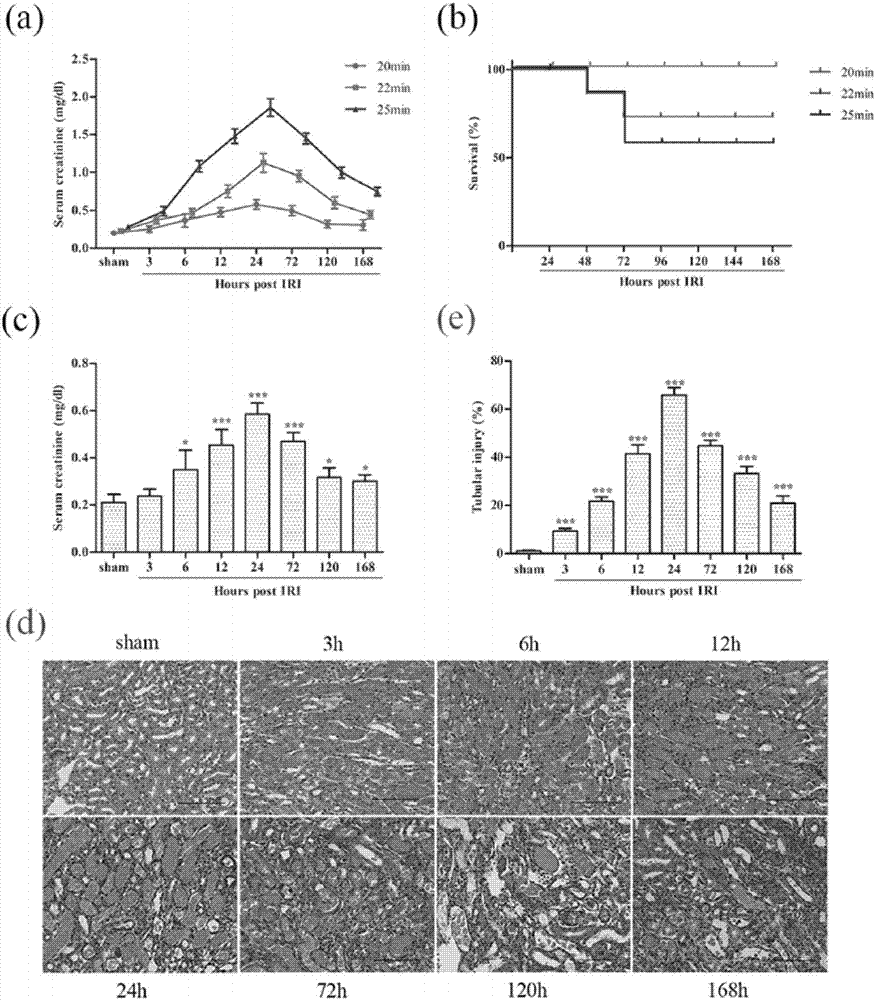Application of Wnt4 used as early biomarker of acute kidney injury in detecting early acute kidney injury
A technology for acute kidney injury and early detection, applied in the field of medicine, can solve the problem of missing the window of opportunity for treatment, and achieve the effect of high sensitivity and strong specificity
- Summary
- Abstract
- Description
- Claims
- Application Information
AI Technical Summary
Problems solved by technology
Method used
Image
Examples
Embodiment 1
[0027] Embodiment 1 Animal experiment part
[0028] Bilateral ischemia / reperfusion injury (IRI) model of C57BL / 6 mice was established: fasting but not water for 8 hours before operation, intraperitoneal injection of 1% pentobarbital 60 mg / kg, anesthetized mice. After the skin on both sides of the lower back was sheared and prepared, the surgical area was disinfected. A 1cm longitudinal incision was made on the back of both sides, and the skin, subcutaneous tissue, muscle layer, and peritoneum were opened in order to expose the renal pedicle (renal artery and vein) on the right side. After 20 minutes of the side renal artery and vein (completed within 2 minutes), the color of the kidney changes from pink to purple-black, indicating successful arterial clipping. Pay attention to the heat preservation and moisturizing of the operation area. After 20 min, the arterial clamp was released and removed, and the color of the kidney changed to pink again, indicating successful reperfus...
Embodiment 2
[0057] Embodiment 2 clinical experiment part
[0058] We conducted a clinical trial and selected patients with minimal change disease (MCD) and divided them into MCD group (MCD only) and MCD with tubular injury group (MCD with tubular injury). within the normal range. A 24-hour urine sample was obtained prior to renal biopsy. HE and Schiff periodic acid shiff (PAS) staining of paraffin sections were used to observe the pathological changes of the kidneys in each group and to score the degree of tubulointerstitial damage, and MASSON staining was used to observe the degree of fibrosis of renal tissue. Immunohistochemical staining was used to observe the expression changes of Wnt4 protein in kidney tissues of cases in each group. At the same time, Western blot and ELISA methods were used to detect (same as Example 1) the excretion of Wnt4 in the urine of patients in each group. And compared with KIM-1, a marker of renal tubular injury, to observe the relationship between the t...
PUM
 Login to view more
Login to view more Abstract
Description
Claims
Application Information
 Login to view more
Login to view more - R&D Engineer
- R&D Manager
- IP Professional
- Industry Leading Data Capabilities
- Powerful AI technology
- Patent DNA Extraction
Browse by: Latest US Patents, China's latest patents, Technical Efficacy Thesaurus, Application Domain, Technology Topic.
© 2024 PatSnap. All rights reserved.Legal|Privacy policy|Modern Slavery Act Transparency Statement|Sitemap



